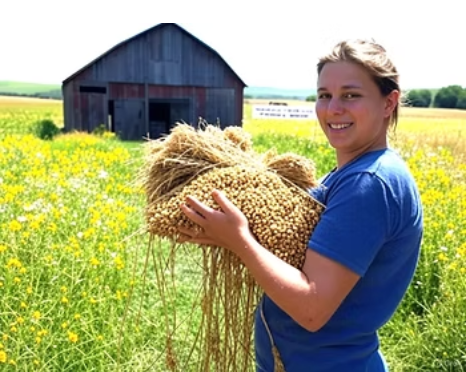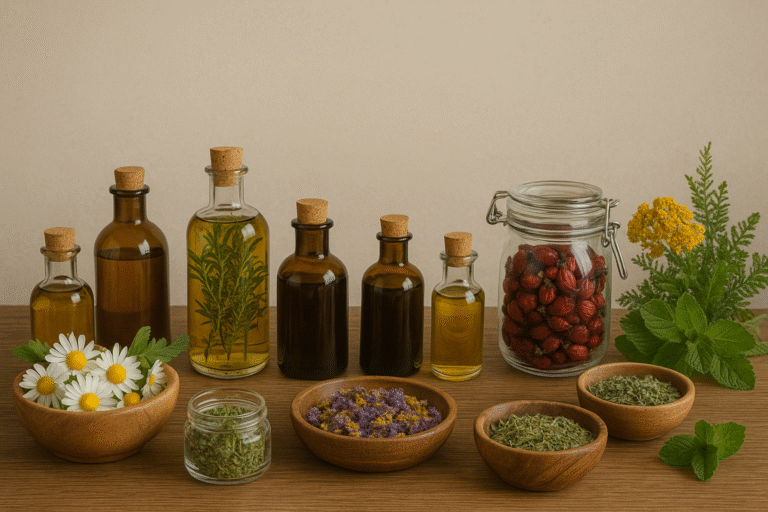Growing Ancient Grains for a Sustainable Pantry: Tips for Beginner
In a world leaning toward self-sufficiency, growing your own food is a powerful step toward sustainability. While modern wheat dominates many pantries, ancient grains like spelt, einkorn, and emmer are making a comeback for their rich flavors, nutritional benefits, and resilience in diverse climates.

These time-tested crops, cultivated for thousands of years, offer homesteaders a way to diversify their harvests and reduce reliance on commercial food systems. Plus, there’s something deeply satisfying about milling your own flour from grains you’ve grown. If you’re new to homesteading or gardening, don’t worry—ancient grains are surprisingly beginner-friendly. Here’s a guide to get you started, from choosing the right grains to harvesting your first crop.
Why Grow Ancient Grains?
Ancient grains aren’t just a trendy buzzword; they’re a practical choice for sustainable living. Unlike modern hybrid wheat, varieties like spelt and einkorn require fewer chemical inputs, making them ideal for organic or low-input farming. They’re often more drought-tolerant and adaptable to poor soils, which is a boon for homesteaders working with less-than-ideal land. Nutritionally, these grains pack a punch—einkorn, for example, has higher protein and mineral content than modern wheat, while emmer offers a nutty flavor perfect for artisan breads.
Growing your own grains also cuts down on grocery bills and packaging waste. A small plot can yield enough for baking, porridges, or even home-brewed beer. Plus, ancient grains connect you to agricultural heritage, letting you cultivate the same crops our ancestors relied on. If you’re curious about hands-on learning, events like the OSR Homesteading Festival in Utah offer presentations on ancient grains, where you can pick up practical tips from experienced growers.
Step 1: Choose Your Grains
Before you grab a shovel, decide which ancient grains suit your climate and goals. Here are three beginner-friendly options:
- Einkorn: One of the oldest wheat varieties, einkorn thrives in cooler climates and poor soils. It’s great for small plots and yields a sweet, golden flour ideal for pancakes or pasta.
- Spelt: Known for its hardiness, spelt tolerates drought and heat better than modern wheat. Its robust flavor shines in breads and baked goods.
- Emmer: Also called farro, emmer is a versatile grain for warm climates. Use it in salads, soups, or as a rice substitute.
Check your USDA hardiness zone to match grains to your growing season. For example, einkorn loves zones 4–7, while emmer does well in zones 6–9. You can source seeds from specialty suppliers like Baker Creek Heirloom Seeds or local seed exchanges. Start small—100 square feet can yield 10–20 pounds of grain, enough for a year of occasional baking.
Step 2: Prepare Your Soil
Ancient grains aren’t fussy, but they do best in well-drained, loamy soil with a pH of 6.0–7.0. Test your soil with a home kit (available at garden centers) and amend it if needed. Add compost or aged manure to boost fertility, but skip synthetic fertilizers, as ancient grains thrive with minimal inputs. If your soil is heavy clay or sandy, work in organic matter a few weeks before planting to improve texture.
Till or hand-dig your plot to a depth of 6–8 inches, removing weeds and rocks. For small-scale growers, a no-till method works too—lay down cardboard to suppress weeds, then add a thick layer of compost before sowing. This approach preserves soil health and aligns with sustainable homesteading principles.
Step 3: Planting Your Grains
Timing is key when planting ancient grains. Most are winter varieties, meaning you sow them in fall (September–October) for a summer harvest. If you’re in a milder climate, spring planting (March–April) works for some varieties like spring spelt. Check seed packets for specific timing.
Broadcast seeds by hand or use a seed spreader for even distribution. Aim for 1–2 pounds of seed per 1,000 square feet, sowing about 1 inch deep. Lightly rake soil over the seeds and water gently to settle them. If birds are a concern, cover the plot with netting or floating row covers until germination, which takes 7–14 days.
Step 4: Care and Maintenance
Ancient grains are low-maintenance, but a little attention goes a long way. Water sparingly—about 1 inch per week—unless you’re in a drought-prone area, as overwatering can lead to fungal issues. Mulch with straw or grass clippings to retain moisture and suppress weeds. Hand-pull any persistent weeds to avoid competition.
Watch for pests like aphids or rust, though ancient grains are naturally resistant to many modern wheat diseases. If you spot trouble, try organic solutions like neem oil or introduce beneficial insects like ladybugs. Rotate crops annually to prevent soil depletion and keep your plot healthy.
Step 5: Harvesting and Processing
Harvest time is the reward for your patience. Most ancient grains are ready in June or July, when the stalks turn golden and the heads feel firm. Test a few grains by biting them—they should be hard, not milky. Cut the stalks with a sickle or shears, leaving a few inches above the ground. Bundle them into sheaves and let them dry in a shaded, well-ventilated area for 1–2 weeks.
Threshing—separating the grain from the stalks—can be done by hand (beat the bundles in a clean bucket) or with a small thresher for larger harvests. Winnow by pouring grains between containers on a breezy day to blow away chaff. Store your grains in airtight containers in a cool, dry place, and mill them into flour as needed with a home grain mill.
Bonus: Using Your Harvest
Once you’ve got your grains, the fun begins. Grind einkorn for fluffy muffins, cook emmer as a hearty risotto, or bake spelt into crusty sourdough. Experiment with recipes to find what your family loves. You can even sprout grains for salads or feed extras to chickens for a closed-loop homestead system.
Get Inspired
Growing ancient grains is a journey, and every season teaches you something new. If you want to dive deeper, consider attending homesteading events to connect with other growers. The OSR Homesteading Festival, held at Riverbed Ranch in Utah, includes sessions on ancient grains, offering a chance to see sustainable farming in action and swap tips with like-minded folks.
Final Thoughts
Starting an ancient grain patch is more than just gardening—it’s a step toward food sovereignty and a nod to our agricultural roots. With a small plot, some basic tools, and a bit of patience, you can fill your pantry with homegrown goodness. So, grab those seeds, prep your soil, and get growing. Your sustainable homestead is one harvest closer.


